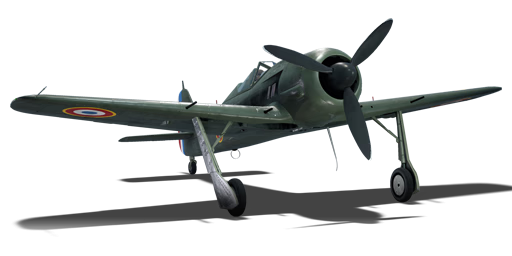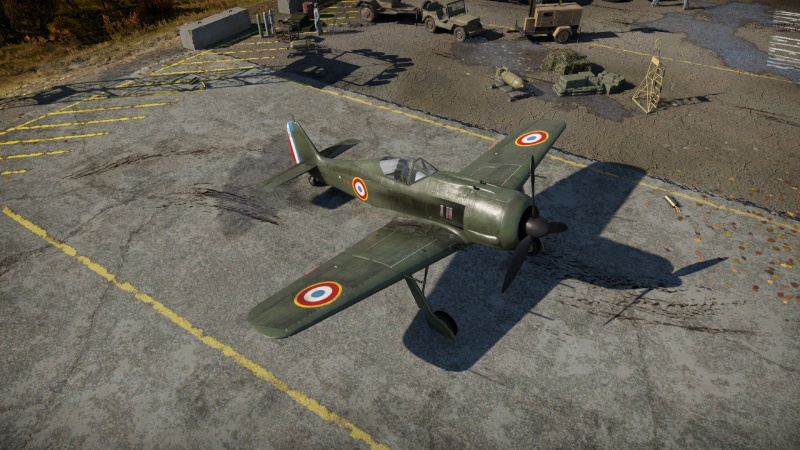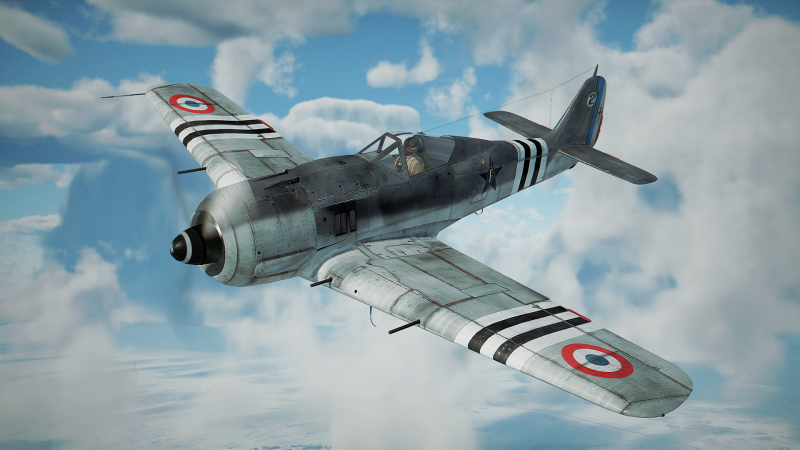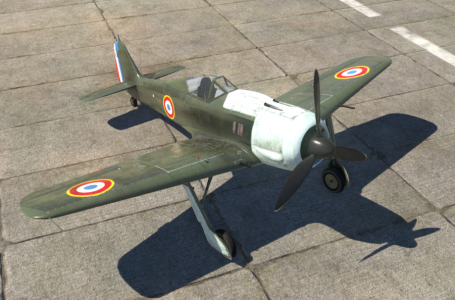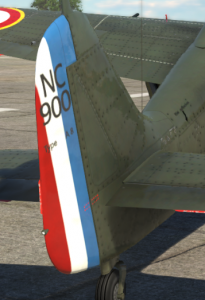Difference between revisions of "NC.900"
m (→Description: added link) |
Colok76286 (talk | contribs) (Edits) |
||
| Line 14: | Line 14: | ||
== Description == | == Description == | ||
<!-- ''In the description, the first part should be about the history of and the creation and combat usage of the aircraft, as well as its key features. In the second part, tell the reader about the aircraft in the game. Insert a screenshot of the vehicle, so that if the novice player does not remember the vehicle by name, he will immediately understand what kind of vehicle the article is talking about.'' --> | <!-- ''In the description, the first part should be about the history of and the creation and combat usage of the aircraft, as well as its key features. In the second part, tell the reader about the aircraft in the game. Insert a screenshot of the vehicle, so that if the novice player does not remember the vehicle by name, he will immediately understand what kind of vehicle the article is talking about.'' --> | ||
| − | The '''{{Specs|name}}''' is a gift rank {{Specs|rank}} French fighter {{Battle-rating}}. It was introduced during [[Update 1.75 "La Résistance"]] | + | The '''{{Specs|name}}''' is a gift rank {{Specs|rank}} French fighter {{Battle-rating}}. It was introduced during [[Update 1.75 "La Résistance"]] as a reward vehicle for the [[wt:en/news/5224-special-festive-quest-en|2017 "Festive Quest"]] event. |
The NC.900 is the identical, French version of the [[Fw 190 A-8|Fw 190 A-8]] which features many of the same characteristics as the late Focke-Wulf Anton fighters. | The NC.900 is the identical, French version of the [[Fw 190 A-8|Fw 190 A-8]] which features many of the same characteristics as the late Focke-Wulf Anton fighters. | ||
| Line 194: | Line 194: | ||
<!-- ''Excellent additions to the article would be video guides, screenshots from the game, and photos.'' --> | <!-- ''Excellent additions to the article would be video guides, screenshots from the game, and photos.'' --> | ||
| − | * [https://live.warthunder.com/feed/camouflages/? | + | ;Skins |
| − | + | * [https://live.warthunder.com/feed/camouflages/?vehicle=fw-190a-8_france Skins and camouflages for the {{PAGENAME}} from live.warthunder.com.] | |
| − | < | + | |
| − | + | ;Images | |
| − | </ | + | <gallery mode="packed-hover" heights="200"> |
| + | File:NC.900 Alt Camo.png|<small>"Non-standard bicolor camouflage pattern", given during the event</small> | ||
| + | File:NC.900 Tail.png|<small>Close-up on unique tail marking</small> | ||
| + | </gallery> | ||
== See also == | == See also == | ||
<!--''Links to the articles on the War Thunder Wiki that you think will be useful for the reader, for example:'' | <!--''Links to the articles on the War Thunder Wiki that you think will be useful for the reader, for example:'' | ||
| − | |||
* ''reference to the series of the aircraft;'' | * ''reference to the series of the aircraft;'' | ||
* ''links to approximate analogues of other nations and research trees.''--> | * ''links to approximate analogues of other nations and research trees.''--> | ||
| Line 211: | Line 213: | ||
<!-- ''Paste links to sources and external resources, such as:'' | <!-- ''Paste links to sources and external resources, such as:'' | ||
* ''topic on the official game forum;'' | * ''topic on the official game forum;'' | ||
| − | |||
* ''other literature.'' --> | * ''other literature.'' --> | ||
Revision as of 21:00, 24 October 2021
| This page is about the French fighter NC.900. For the German version, see Fw 190 A-8. For other versions, see Fw 190 (Family). |
Contents
Description
The NC.900 is a gift rank IV French fighter with a battle rating of 5.3 (AB/SB) and 5.0 (RB). It was introduced during Update 1.75 "La Résistance" as a reward vehicle for the 2017 "Festive Quest" event.
The NC.900 is the identical, French version of the Fw 190 A-8 which features many of the same characteristics as the late Focke-Wulf Anton fighters.
General info
Flight performance
| Characteristics | Max Speed (km/h at 5,500 m) |
Max altitude (metres) |
Turn time (seconds) |
Rate of climb (metres/second) |
Take-off run (metres) | |||
|---|---|---|---|---|---|---|---|---|
| AB | RB | AB | RB | AB | RB | |||
| Stock | 622 | 601 | 10300 | 24.2 | 25.3 | 10.2 | 10.2 | 450 |
| Upgraded | 687 | 652 | 21.4 | 22.8 | 19.5 | 14.1 | ||
Details
| Features | ||||
|---|---|---|---|---|
| Combat flaps | Take-off flaps | Landing flaps | Air brakes | Arrestor gear |
| X | ✓ | ✓ | X | X |
| Limits | ||||||
|---|---|---|---|---|---|---|
| Wings (km/h) | Gear (km/h) | Flaps (km/h) | Max Static G | |||
| Combat | Take-off | Landing | + | - | ||
| 912 | 310 | N/A | 700 | 310 | ~12 | ~6 |
| Optimal velocities (km/h) | |||
|---|---|---|---|
| Ailerons | Rudder | Elevators | Radiator |
| < 420 | < 300 | < 550 | > 320 |
| Compressor (RB/SB) | ||
|---|---|---|
| Setting 1 | ||
| Optimal altitude | 100% Engine power | WEP Engine power |
| 700 m | 1,498 hp | 1,874 hp |
| Setting 2 | ||
| Optimal altitude | 100% Engine power | WEP Engine power |
| 5,300 m | 1,301 hp | 1,628 hp |
Survivability and armour
- 57 mm Bulletproof glass in front of the cockpit.
- 3-5 mm Steel plates in front of oil cooling system.
- 6 mm Steel plate under the radial engine.
- 12 mm Steel plate in pilot's headrest, and a 8 + 6 mm steel plates behind the pilot.
- 8 mm Steel plate under the cockpit.
- 5 mm Steel plate behind the fuel tank.
Modifications and economy
Armaments
Offensive armament
The NC.900 is armed with:
- 4 x 20 mm MG 151 cannons, wing-mounted (140 rpg outer + 250 rpg inner = 780 total)
- 2 x 13 mm MG 131 machine guns, nose-mounted (400 rpg = 800 total)
The four cannons are arranged in bundles of two mounted in each wing. The two outer cannons have 110 less rounds compared to the two inner cannons and will run empty first. The two machine guns are mounted in the nose of the aircraft have the same amount of ammunition and will deplete at the same time if out of ammo.
Usage in battles
Flying the NC.900 tends to be very defensive and relies on neutralising an enemy's energy advantage and capitalising on the plane's advantages. Manoeuvres that work well include the Split-S, Chandelle and anything that requires a high rate of roll. One of these is to dive and roll in a single direction whilst applying rudder. This causes a very tight barrel roll that few aircraft can hope to gain a firing solution on. Another way to clear the NC.900's six is to pitch steeply up and roll over forcing an overshoot and potentially giving a firing solution. It's possible to dismember superior aircraft simply because of the roll rate and firepower this plane possesses. If skilled enough to press for a gun solution when scissoring an enemy, it could be greatly rewarded.
In summary, climb to the side, BnZ steadily, never get in a sustained turn fight, and use the roll rate to outgame the enemy when cornered.
Manual Engine Control
| MEC elements | ||||||
|---|---|---|---|---|---|---|
| Mixer | Pitch | Radiator | Supercharger | Turbocharger | ||
| Oil | Water | Type | ||||
| Not controllable | Controllable Auto control available |
Not controllable Not auto controlled |
Controllable Not auto controlled |
Combined | Not controllable 2 gears |
Not controllable |
Pros and cons
Pros:
- Great roll rate at all speeds.
- Good energy retention (though somewhat poor compared to Spitfire LF Mk IX in the BnZ role).
- Excellent high speed control.
- Heavy armament, with plenty of ammunition.
- Well armoured from the front, especially cockpit.
- Small and rugged air-frame.
- Has interceptor airspawn.
Cons:
- Poor acceleration at all altitudes.
- Poor turn time and energy retention in turns.
- Poor control at low speed.
- Rate of climb is mediocre.
- Bad at altitude performance.
- Very bricky to fly in general.
History
The SNCAC NC.900 was a French version of the Focke-Wulf Fw 190, constructed from a number of abandoned Fw 190A-5 and A-8 airframes found in the former chalk quarry of Cravant after the Liberation of France.
The chalk quarry of Cravant was used for about 800 years for mining chalkstone, used in the construction of local buildings. After the quarry was abandoned in 1935, centuries of extractions of chalk had resulted in large underground caverns. During 1939, the French constructor Loire et Olivier became interested in the abandoned quarry, seeing the underground caverns as an ideal location to construct an additional aircraft factory. Before any airframe could be built at the Cravant installation, the Germans managed to occupy France, and for a couple of years, the installations at Cravant lay dormant. However, following the intensification of the Allied bombing offensive in 1943, the Germans started looking at alternative repair depots, and the installations at Cravant were reactivated. Following preparations, the repair facilities at Cravant were taken in use on February 6th 1944 as the Sonderreparaturbetrieb G.L & Elbag Lager 918 Auxerre, also known as the Frontrepareturbetrieb 918. Cravant soon became the main repair works for Focke-Wulf Fw 190s on the Western Front.
Over the next 6 months, about 163 Focke Wulf 190s were repaired at Cravant until the region was liberated by Allied forces on August 18th 1944. The German Forces tried to destroy the facilities before abandoning them by setting them on fire, however, according to local legends, the fire was asphyxiated through a lack of oxygen in the underground caverns. As such, when the factory was discovered by the Allied forces, they discovered 156 sets of wings and 112 fuselages of various marques of Focke Wulf Fw 190, including Fw 190 A-3s, A-4s, A-5s, A-6s, A-7s, A-8s, F-8s and G-3s. A large number of these fuselages were in a damaged state, either through pre-existing damage which had seen the aircraft end up at the facility in the first place or through damage caused by the fire set by the retreating German forces. After an inventory was made, it was found that of 112 fuselages about 70 to 75 were more or less in a useable state. With a large supply of available parts and a need for fighter planes, the decision was taken to rebuild a number of Focke Wulfs for use by French units.
Assembly of the airframes was started under the supervision of the Société Nationale de Construction Aéronautique du Centre (SNCAC), and the French-built Fw 190s were given the new designation of NC.900. Despite using a mixture of A-5, A-6 and A-8 fuselages and wings, no separate designations were given to the two variants; the main problem faced by the SNCAC was a lack of BMW 801 engines, necessitating the use of a large stock of engines built by the French Voisin factories. However, at the time it was not fully understood that these engines, built during the German occupation, had been subtly sabotaged by the French labourers, often in such a way that the sabotage could not be determined unless one knew where to look.
The first NC.900 flew on March 16th 1945, and the first aircraft was officially accepted by the French Air Force on May 11th 1945. The first unit which would be converted to the NC.900 was the Groupe du Chasse III/5 : the legendary Normandie-Niemen group which had arrived from the Soviet Union to France on June 20th 1945, and which in the first few months after its return had been flying the Yakolev Yak 3 with which the unit had returned from the Soviet Union. As spares for these aircraft were impossible to come by in France, and the unit's aircraft had one by one been cannibalised to keep them flying, the decision was made to assign the NC.900 to them first - and that could not have been a worse choice. After all, Normandie-Niemen had just spent three years on the Eastern Front, where they had fought intense battles against the Focke-Wulf Fw 190s of JG51 and had lost many of their comrades to the Butcher Bird's guns. As a result, the pilots hated the Fw 190/NC.900 and thoroughly disliked flying it. Despite their protests, the unit was officially converted to NC.900 on February 1st 1946.
Due to the way in which the NC.900s had been assembled at Cravant - using numerous parts of various variants without any real attempt at matching parts - the end result was that the NC.900 proved to be an unbalanced and unstable aircraft, with each separate airframe having distinctly different flying characteristics. Additionally, sabotage to both engines and individual parts meant that numerous incidents soon started happening with the NC.900s; added to that the pilots of Normandie-Niemen had been used to flying the lighter and more nimble Yak fighters, and conversion to the 'hated' Butcher Bird proved more problematic than expected. A series of incidents, accidents and mechanical breakdowns - often due to failure of sabotaged parts or engines - soon gave the NC.900 a very bad reputation, and already two weeks after its official introduction into service, on February 18th, the decision was taken to end production of the type, with the type being grounded in April pending thorough inspections. This resulted in a partial lifting of the ban, and 9 airframes were greenlit for service in July of 1946, but only one of them appears to have flown until the NC.900 was permanently grounded on November 1st 1946. The circa 70 NC.900s built flew barely 100 hours in service between February 1st and November 1st 1946.
Following the permanent flight ban of the NC.900s, the remaining airframes were scrapped except for one which now stands as an Fw 190 at the Musée de l'Air et de l'Espace at Bourget; France's remaining stock of Focke Wulf spare parts was subsequently sold to Turkey to keep its remaining Fw 190A-3a's flying (they, in turn, were withdrawn from service towards the end of 1947).
Media
- Skins
- Images
See also
- Equivalent aircraft from the Fw 190 lineage
External links
- Official data sheet - more details about the performance (Archive)
- [Histavia21 website] CRAVANT, L' USINE SOUTERRAINE Focke Wulf 190 et NC 900 (Archive)
- [Aviationsmilitares website] SNCAC NC.900 (Archive)
- [Avionslegendaries website] SNCAC NC.900 (Archive)
| Focke-Wulf Aircraft Corporation (Focke-Wulf Flugzeugbau Aktiengesellschaft) | |
|---|---|
| Fighters | Fw 190 A-1 · Fw 190 A-4 · Fw 190 A-5 · Fw 190 A-5/U2 · Fw 190 A-5/U12 · Fw 190 A-5/U14 · Fw 190 A-8 |
| Fw 190 C | |
| Fw 190 D-9 · Fw 190 D-12 · Fw 190 D-13 | |
| Fw 190 F-8 | |
| Ta 152 C-3* · Ta 152 H-1* · Ta 154 A-1* | |
| Bombers | Fw 189 A-1 · Fw 200 C-1 |
| Export | ▅Fw 190 A-5 |
| Captured | ▃Fw 190 A-8 · ▂Fw 190 D-9 |
| * In 1944, the Germany Air Ministry changed new fighter aircraft designation to that of the chief designer. Kurt Tank was the chief designer at Focke-Wulf and later aircraft he designed were given the prefix of Ta. | |
| France fighters | |
|---|---|
| Dewoitine | D.371 · D.371 H.S.9 · D.373 · D.500 · D.501 · Pallier's D.510 · D.520 |
| Morane-Saulnier | M.S.405C1 · M.S.406C1 · M.S.410 |
| Arsenal | V.G.33C-1 |
| Bloch | M.B.152C1 · M.B.157 |
| Caudron | C.R.714 |
| Sud-Ouest | S.O.8000 Narval |
| American | H-75A-1 · H-75A-4 · ▄P-39Q-25 · ▄P-40F-5 Lafayette · ▄P-47D-22-RE · ▄P-63C-5 · F-6C-10-NA |
| ▄F6F-5 · ▄F6F-5N · F4U-7 · ▄F8F-1B | |
| Other countries | ▄Seafire LF Mk.III · ▄Yak-3 · Challe's ▄Yak-9T · NC.900 |
| Belgium | ▄Gladiator Mk I · ▄Spitfire FR Mk XIVe |
| Netherlands | ◘Sea Fury FB 51 |
| France premium aircraft | |
|---|---|
| Fighters | D.371 H.S.9 · Pallier's D.510 · ▄P-39Q-25 · ▄P-40F-5 Lafayette · ▄P-47D-22-RE · F-6C-10-NA |
| M.B.152C1 · ▄Yak-3 · Challe's ▄Yak-9T · NC.900 · S.O.8000 Narval | |
| Jet fighters | ◘Sea Hawk Mk.50 · Milan · Mirage F1C-200 |
| Strike aircraft | ▄AD-4NA · F-84F IAF |
| Bombers | Late 298D · ▄PBY-5A Late |
| Jet bombers | Vautour IIA IDF/AF · S.O.4050 Vautour IIN |


